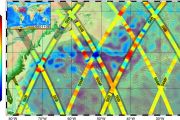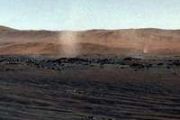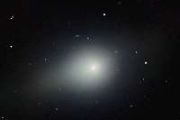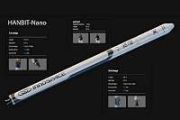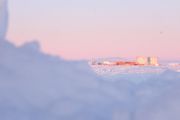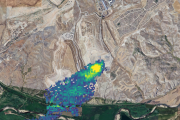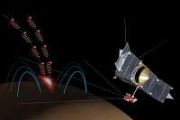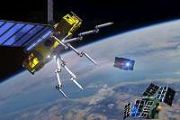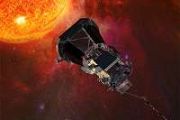
Copernical Team
Satellite security lags decades behind the state of the art
 Thousands of satellites are currently orbiting the Earth, and there will be many more in the future. Researchers from Ruhr University Bochum and the CISPA Helmholtz Center for Information Security in Saarbrucken have assessed the security of these systems from an IT perspective. They analysed three current low-earth orbit satellites and found that, from a technical point of view, hardly any mode
Thousands of satellites are currently orbiting the Earth, and there will be many more in the future. Researchers from Ruhr University Bochum and the CISPA Helmholtz Center for Information Security in Saarbrucken have assessed the security of these systems from an IT perspective. They analysed three current low-earth orbit satellites and found that, from a technical point of view, hardly any mode Google launches ChatGPT rival Bard in EU, Brazil
 Google launched its AI chatbot Bard in the European Union, Brazil and a dozen other countries on Thursday and unveiled new features as it expands access to its answer to Microsoft-backed ChatGPT.
The US tech giant unveiled Bard in February but delayed its release in the European Union as the bloc plans to regulate artificial intelligence amid concerns about risks associated with the rapidly
Google launched its AI chatbot Bard in the European Union, Brazil and a dozen other countries on Thursday and unveiled new features as it expands access to its answer to Microsoft-backed ChatGPT.
The US tech giant unveiled Bard in February but delayed its release in the European Union as the bloc plans to regulate artificial intelligence amid concerns about risks associated with the rapidly SHERLOC instrument offers new perspective on Jezero Crater, Mars
 Scientists are getting a closer look of potential organic signatures in Martian rocks and may have found evidence of key building blocks of life preserved within two potentially habitable paleo-depositional settings in Mars' Jezero crater. These organics, a class of carbon-based molecules, could have been left by ancient microbial life - though there are many geological sources of organics on Ma
Scientists are getting a closer look of potential organic signatures in Martian rocks and may have found evidence of key building blocks of life preserved within two potentially habitable paleo-depositional settings in Mars' Jezero crater. These organics, a class of carbon-based molecules, could have been left by ancient microbial life - though there are many geological sources of organics on Ma Robot team on lunar exploration tour
 On the Moon, there are raw materials that humanity could one day mine and use. Various space agencies, such as the European Space Agency (ESA), are already planning missions to better explore Earth's satellite and find minerals. This calls for appropriate exploration vehicles. Swiss researchers led by ETH Zurich are now pursuing the idea of sending not just one solitary rover on an exploration t
On the Moon, there are raw materials that humanity could one day mine and use. Various space agencies, such as the European Space Agency (ESA), are already planning missions to better explore Earth's satellite and find minerals. This calls for appropriate exploration vehicles. Swiss researchers led by ETH Zurich are now pursuing the idea of sending not just one solitary rover on an exploration t New radar technique lets scientists probe invisible ice sheet region on Earth and icy worlds
 Scientists at the University of Texas Institute for Geophysics (UTIG) have developed a radar technique that lets them image hidden features within the upper few feet of ice sheets. The researchers behind the technique said that it can be used to investigate melting glaciers on Earth as well as detect potentially habitable environments on Jupiter's moon Europa.
The near-surface layers of ic
Scientists at the University of Texas Institute for Geophysics (UTIG) have developed a radar technique that lets them image hidden features within the upper few feet of ice sheets. The researchers behind the technique said that it can be used to investigate melting glaciers on Earth as well as detect potentially habitable environments on Jupiter's moon Europa.
The near-surface layers of ic China unveils preliminary plan on manned lunar landing
 China plans to land its taikonauts on the moon before 2030 to carry out scientific exploration, according to a preliminary plan released by the China Manned Space Agency (CMSA) on Wednesday.
The plan is to launch two carrier rockets to send a lunar lander and a manned spacecraft to a lunar orbit, respectively. The craft and lunar lander will rendezvous and dock with each other, and then ta
China plans to land its taikonauts on the moon before 2030 to carry out scientific exploration, according to a preliminary plan released by the China Manned Space Agency (CMSA) on Wednesday.
The plan is to launch two carrier rockets to send a lunar lander and a manned spacecraft to a lunar orbit, respectively. The craft and lunar lander will rendezvous and dock with each other, and then ta China begins construction of ultra-low orbit satellite constellation
 The China Aerospace Science and Industry Corporation Limited (CASIC) has announced the official start to the construction of an ultra-low orbit satellite constellation.
The CASIC made the announcement at the opening of the 9th China (International) Commercial Aerospace Forum, which kicked off on Wednesday in Wuhan, central China's Hubei Province.
The CASIC said the first satellite of
The China Aerospace Science and Industry Corporation Limited (CASIC) has announced the official start to the construction of an ultra-low orbit satellite constellation.
The CASIC made the announcement at the opening of the 9th China (International) Commercial Aerospace Forum, which kicked off on Wednesday in Wuhan, central China's Hubei Province.
The CASIC said the first satellite of Muon Space awarded additional funding from AFLMC and DIU to collect space weather data
 Muon Space has been awarded an option to their contract with Air Force Life Cycle Management Center (AFLMC)'s Weather Systems Branch and the Defense Innovation Unit (DIU) to collect ionospheric data on their MuSat-2 satellite mission.
The performance period for this contract is two years extending through September 2024. This is an optional expansion in scope to the original contract award
Muon Space has been awarded an option to their contract with Air Force Life Cycle Management Center (AFLMC)'s Weather Systems Branch and the Defense Innovation Unit (DIU) to collect ionospheric data on their MuSat-2 satellite mission.
The performance period for this contract is two years extending through September 2024. This is an optional expansion in scope to the original contract award Musk launches xAI to rival OpenAI, Google
 Elon Musk on Wednesday launched his own artificial intelligence company, xAI, as he seeks to compete with OpenAI, the creator of ChatGPT - a program he accuses of being politically biased and irresponsible.
The xAI website said the Tesla tycoon would run the company separately from his other companies but that the technology developed would benefit those businesses, including Twitter.
Elon Musk on Wednesday launched his own artificial intelligence company, xAI, as he seeks to compete with OpenAI, the creator of ChatGPT - a program he accuses of being politically biased and irresponsible.
The xAI website said the Tesla tycoon would run the company separately from his other companies but that the technology developed would benefit those businesses, including Twitter. In Brazil, stargazers escape cities in search of 'astro-tourism'
 Awestruck by the oranges and blues of the Jewel Box star cluster, part of the Southern Cross constellation, Pedro Froes manages to get out a few words: "It's incredible."
Froes is viewing the stars from a telescope in Desengano State Park, a rural patch of Brazil largely spared from light pollution, located some 260 kilometers (160 miles) north of Rio de Janeiro.
Desengano is Latin Ameri
Awestruck by the oranges and blues of the Jewel Box star cluster, part of the Southern Cross constellation, Pedro Froes manages to get out a few words: "It's incredible."
Froes is viewing the stars from a telescope in Desengano State Park, a rural patch of Brazil largely spared from light pollution, located some 260 kilometers (160 miles) north of Rio de Janeiro.
Desengano is Latin Ameri 


